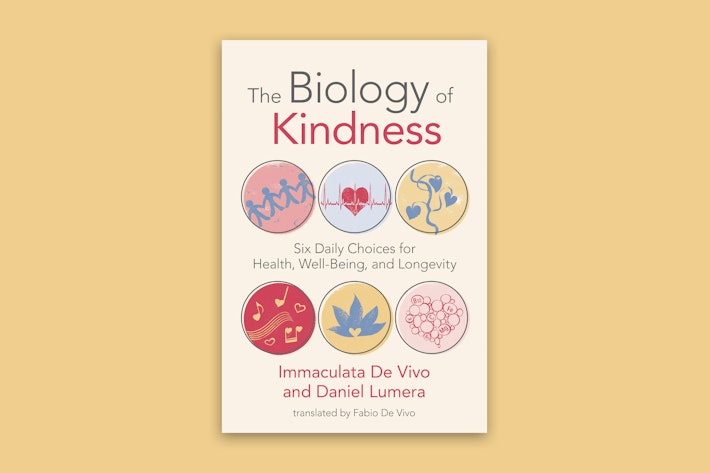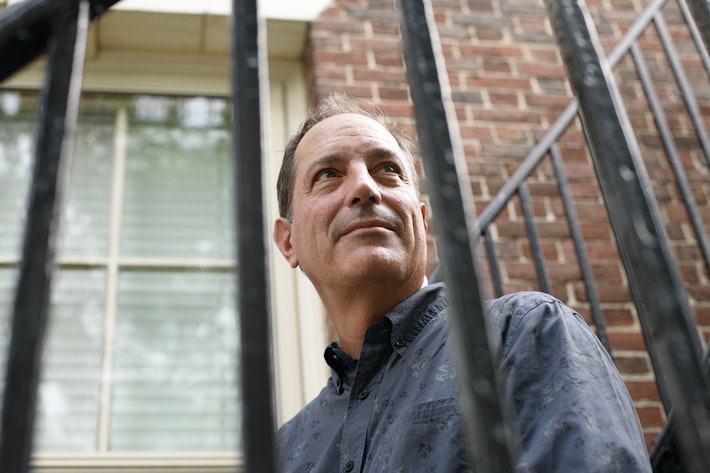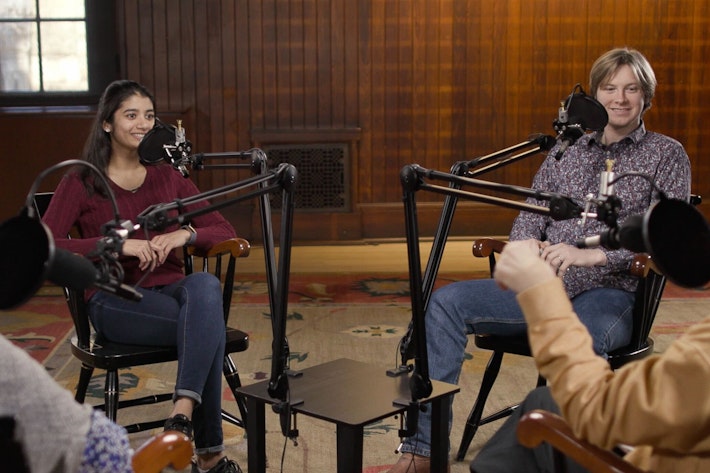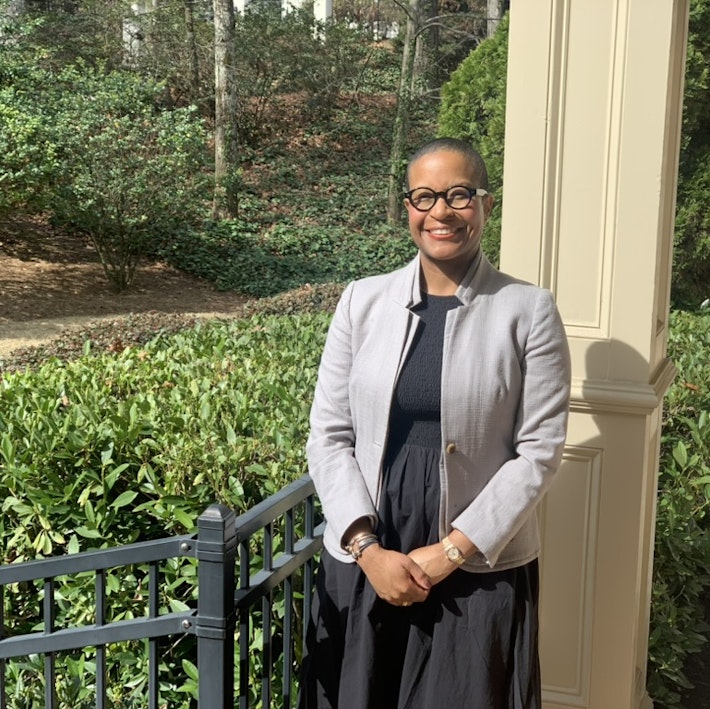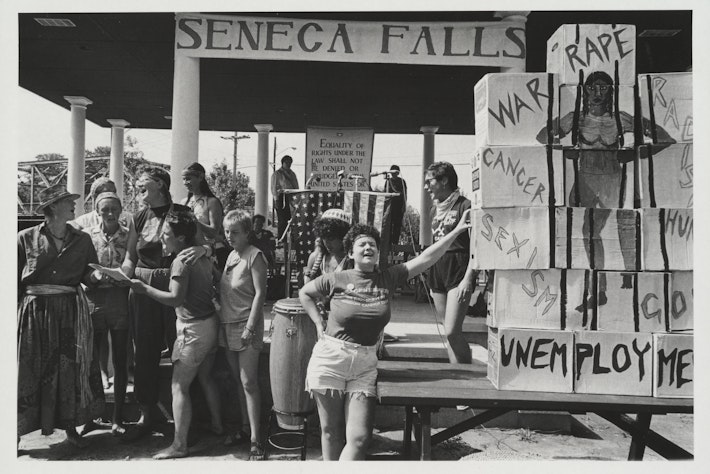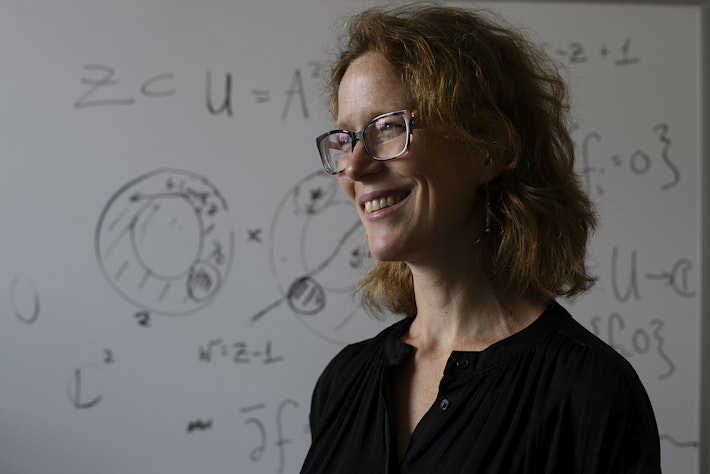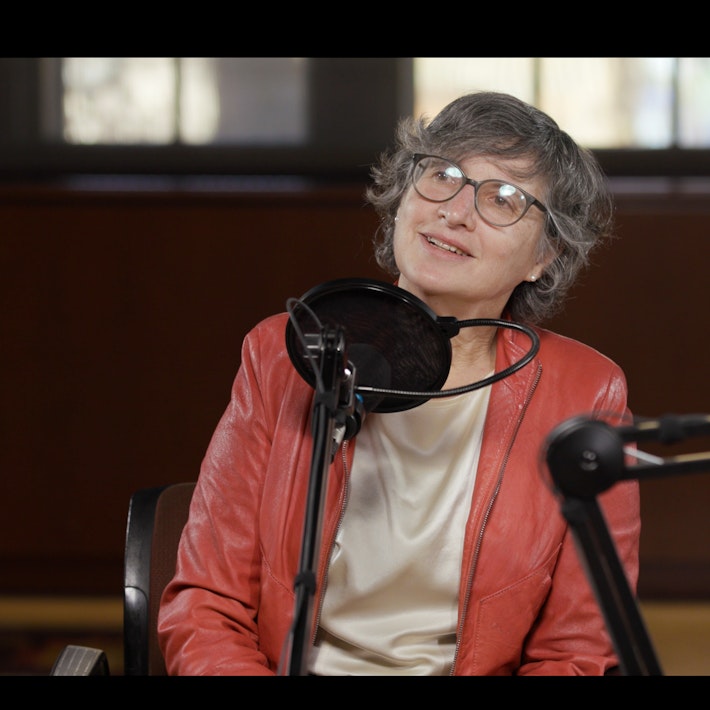Beyond the “Zero Book”
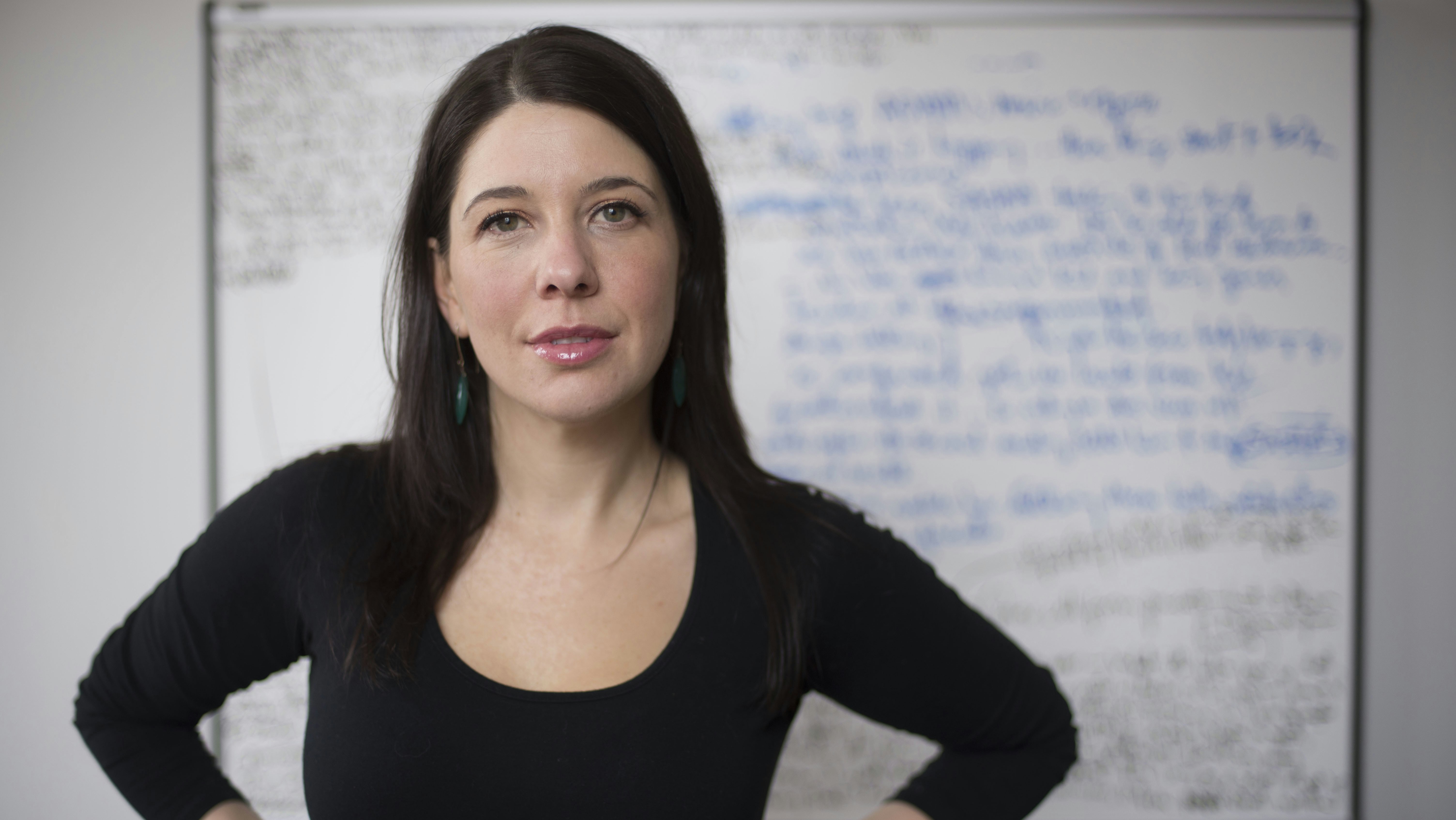
Before she wrote The UnAmericans, Molly Antopol RI '17 worked mostly on what she considered her “zero book,” a collection of short stories that she never showed to anybody outside her workshops and never sent out for publication. She wrote to learn how to write.
Molly Antopol RI '17 always wanted to be a writer, “but” she says, “it seemed so pie-in-the-sky.” She lived in Connecticut with her hardworking single mom until she was five, when they moved to Los Angeles. “To say I wanted to be a writer would have been like saying I wanted to be an astronaut or a magician.”
With the publication of The UnAmericans (Norton, 2014), a book of short stories, she succeeded in creating a world of activists, artists, and academics, living in places as varied as Ukraine, Los Angeles, and Israel, many of them caught between the modern world and older realities, struggling to make sense of both. The eight stories, which took 10 years to write, are old-fashioned in the best sense of the word, delving deeply into characters and situations and places. Antopol’s early life may not have pointed toward her later success, but her experiences provided material for the worlds she renders on paper.
During college at the University of California at Santa Cruz, she lived in a rural area and worked in what she calls “the family business”—unions—with the United Farmworkers. “I thought that’s what I would continue to do with my life,” she says. But a writing course sent her in a different direction. Today, the only college classes she remembers are the ones in writing. “I just felt so passionate about them that I thought I had to figure out a way to do this.” But it took a while.
The day she graduated from college, she moved to Israel, where she had previously studied at Hebrew University in Jerusalem. This time, she worked at an immigrant absorption center in the south with Russian and Chechen kids and with an environmental group in Jerusalem. Then she worked with a human rights group and started to do grant writing, something in her mother’s field. “Again, I felt like this made sense within my family and was really important work,” Antopol says. “I didn’t have time to write fiction, but I felt very strongly about what I was doing.”
Antopol wondered, though, if she could ever find a way to write without also devoting herself to a job. She thought of academia. Unable to decide between a master’s in Middle Eastern studies and an MFA in writing, she applied to Columbia University, where she could study both. “That way,” she says, “I could take all my electives in Middle Eastern subjects.” Writing won out, however, and she got a scholarship, earning her MFA in 2004.
“Then, when I had put that book very firmly in the drawer,” she says, “I started on The UnAmericans.”
After completing her MFA at Columbia, Antopol stayed in New York for two years and worked at several jobs. Then living with her now-husband, the nonfiction writer Chanan Tigay—author of The Lost Book of Moses: The Hunt for the World’s Oldest Bible (Ecco, 2016)—Antopol worked in a high school teaching program, did some medical writing, and at night taught English as a second language. But she was broke and frazzled. She and Tigay considered moving to Israel, where they both had job contacts and it was cheaper to live. Before they had time to plan a move, though, she was awarded a Wallace Stegner Fellowship in Fiction at Stanford in 2006. She worked on many of the stories in The UnAmericans in her workshop there, and the book was published to wide praise. Since 2008, Antopol has taught at Stanford, where she’s currently the Jones Lecturer of Creative Writing.
Starting from Zero
One story from her “zero book” did make it into The UnAmericans. “Duck and Cover,” set in the 1950s at the end of the Army–McCarthy hearings, features an adolescent girl observing her Communist father, now unemployed and hanging out in Menick’s restaurant in the Bronx with his cronies. Antopol wrote the story when she was 24 or 25, not much older than the girl in the story. “I was able to capture the immediacy and almost myopic vision that the voice has in that story,” she says. “I thought it was important to include it in the collection because it could contrast with the other stories.”
Antopol says that her grandparents were deeply involved with the Communist Party, and she was interested early on in what it must have been like for her mother and her mother’s siblings to live under so much surveillance. Although “Duck and Cover” and other early stories were inspired by family history, she says, it’s the situation—not the characters—that she drew from her family: “I was trying to understand that time period, which I think will be endlessly fascinating to me throughout my writing life.”
Unlike many short-story writers, Antopol spends a lot of time researching and imagining her characters’ backstories. She knows the period she’s writing about—its history and politics—before she ever begins to write. And she knows her characters’ entire lives, from birth to death. “I try to isolate in the story what the most fraught and interesting moments are in their lives,” she says, “that hold the most tension.”
Antopol is now at work on a novel titled “The After Party”—which she describes as being “about surveillance and privacy and the secrets we keep from the people closest to us.” She won’t divulge much more about her new project except to say that she’s doing lots of research and the novel is expanding in exciting ways.
From the looks of her office in Byerly Hall, Antopol—who is the 2016–2017 Lisa Goldberg Fellow at Radcliffe—is working productively: stacks of papers cover the table adjacent to her desk. Just having the space to spread out her books and papers is a luxury, she says. In the San Francisco apartment she shared with her husband and daughter, Nell, now 20 months old, Antopol’s writing desk was also her daughter’s changing table.
Living in Cambridge is enjoyable, Antopol says, partly because it’s home to many of her favorite writers, including Radcliffe alumnae Allegra Goodman ’89, RI ’09, Gish Jen ’77, BI ’87, RI ’02, Margot Livesey RI ’13, and Claire Messud RI ’05. And across the river in Brookline is a writer she says she “looked to a lot” when she was writing her book—Edith Pearlman ’57. “Her stories are character-based and psychologically driven,” Antopol says, “but you can feel this larger political and historical landscape pushing down on people.” Sounds like the stories in The UnAmericans.
From "Retrospective" in The UnAmericans: Stories by Molly Antopol
Friends quoted in the obituaries talked about Eva Kaplan in her heyday, back in the sixties and seventies. They talked about the parties she and her husband used to throw in their Jerusalem home, inspired by the secret apartment exhibits Eva had attended in Moscow. A few Russian artists were often in attendance, and friends recalled them standing in front of their paintings, surrounded by philanthropists and U.N. officials and Knesset members, while Eva swept through the crowd in a silky pantsuit, a cocktail in hand, wearing what appeared to be all of her gold at once. The exhibits went on in the living room, but displayed throughout her home was the permanent collection amassed over a lifetime: the Picassos and Legers bought for a pittance back in the thirties, when she was still a young and ambitious art student in Paris; the Kotins and Gottliebs she’d begun collecting in the fifties during her years in New York; and, of course, the works that had made her as famous in her circle as the painters themselves: the hundreds of pieces she’d smuggled out of Russia, right up to the fall of the Curtain.
The art, her friends admitted, wasn’t always that great. Of course the whole point, one friend said, was that it was supposed to be edgy and political, but there was no getting around how unappetizing it was to stare at a canvas of Nikita Khrushchev in a compromising position each morning over breakfast. Other pieces had been virtually destroyed by the time Eva exhibited them. It was hard to know if the poor quality had to do with the fact that the artists often worked with anything they could scavenge off the streets, mud and trash and auto paint, or if it was the shoddy way Eva had packed them, so that by the time the smuggled art made it through customs at Ben Gurion and was unveiled on her wall, the canvases, which sometimes weren’t canvases at all but paper bags or burlap sacks, were so faded and torn it was hard to see what the artist’s original intent had been. Still, friends insisted it wasn’t simply the work one bought but the stories that went along with it. Eva had sneaked out several of Litnikov’s now-famous camp paintings and, more than anyone, had promoted Mikhail Borovsky’s work throughout the U.S. and Israel. Borovsky had been one of Russia’s best-known painters under communism and internationally prized even after his death a few years ago, possibly the only member of the Artists Union the unofficial artists had respected back then, the only one, they’d said, able to think craftily within the constraining box of Socialist Realism—the only one, as Eva had said, who didn’t think membership meant he had to paint “another bridge, or smiling worker, or ridiculous cow.”
Copyright © 2014 by Molly Antopol. Reprinted with permission from W. W. Norton and Company, Inc.
